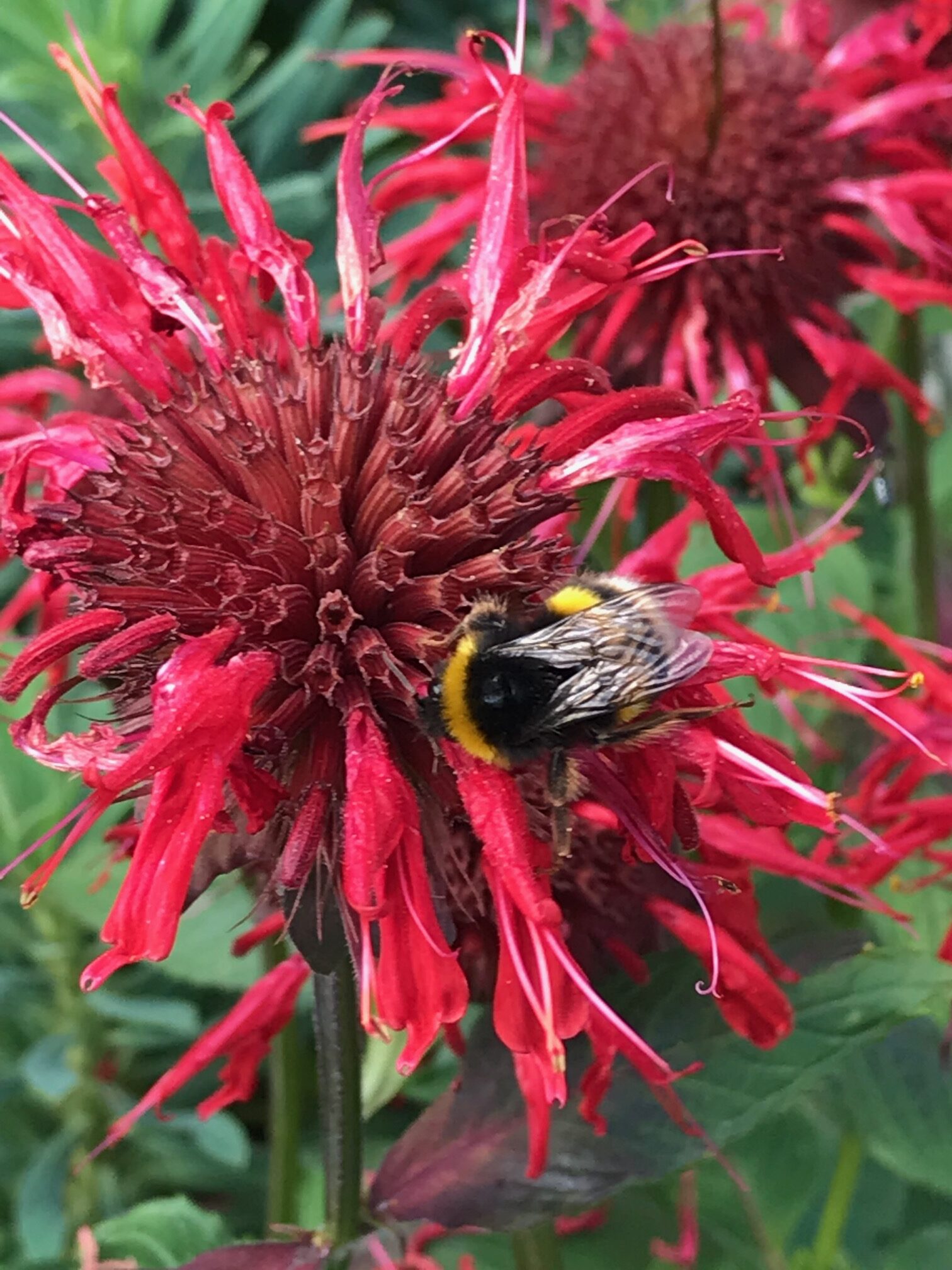Many of our garden herbs are good bee plants. Bee balm, like the name suggests is a magnet for bees and especially bumblebees. The magnificent flowers are large, complex, rich in nectar and held on strong stems, just as our virgin queen bumblebees emerge from the nest. Look out for huge, perfect queen bumblebees feeding voraciously on nectar rich flowers like bee balm.
This spectacular plant is a member of the mint family and like other members of the lamiaceae family it is particularly good for pollinators because the flowers are rich in nectar. This is a perennial form of bee balm, but there are some annuals too. The plants have aromatic foliage with a rich and distinct fragrance. The leaves are so fragrant that they can be added to your daily cuppa to impart an ‘Earl Grey’ tea effect.
The flower heads are dramatic and unusual. Long curved tubular flowers grow out of the flower head in a tumbling fashion creating a shaggy but soft look.
It’s hardy, clumps up when established and is a stunning addition to the garden border. It can also be grown in pots and planters.
All in the name
When you want good plants for pollinators it’s a good idea to see which plants are popular in your local area. See what is in flower in your neighbour’s gardens, or in public gardens and check out the labels if you can. Look out for plants that mention bees in their names, such as Melissa officinalis (Lemon balm), Melianthus major, Euphorbia mellifera and bee balm (bergamot); these are sure signs that these plants are good for bees.
Sometimes it just takes a look at a plant name to learn a bit more about it. Bee balm is a good example of this because it is also called bergamot and it’s latin name is Monarda didyma. But the clue is in the bee balm label. If you stake out a flowering clump of this striking plant, on a sunny day, you will find it a magnet for bees and other pollinators. They can sit atop and sup nectar, sometimes staying for hours at a time, perhaps an indication that it is a balm as well as a nectar bar.

Leave a Reply